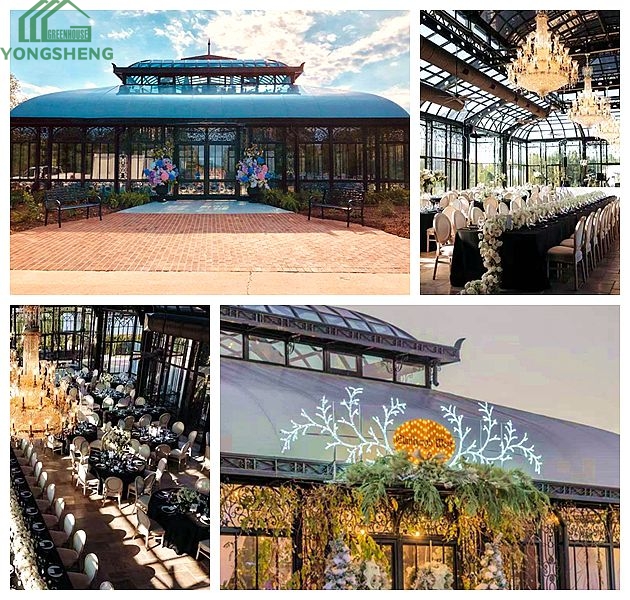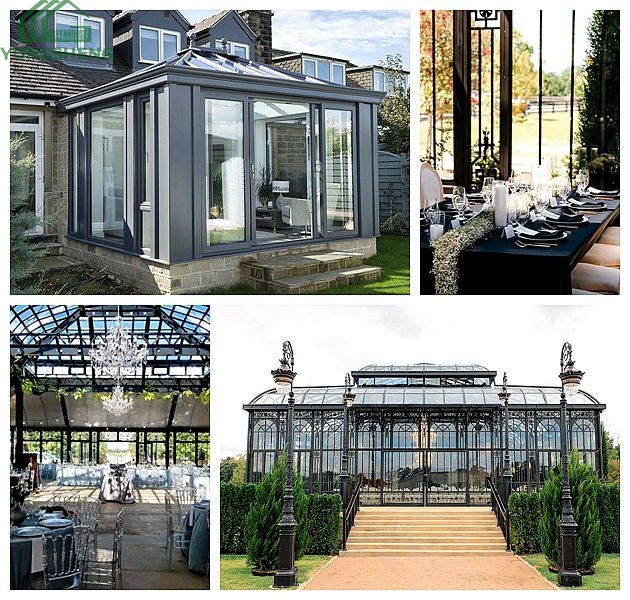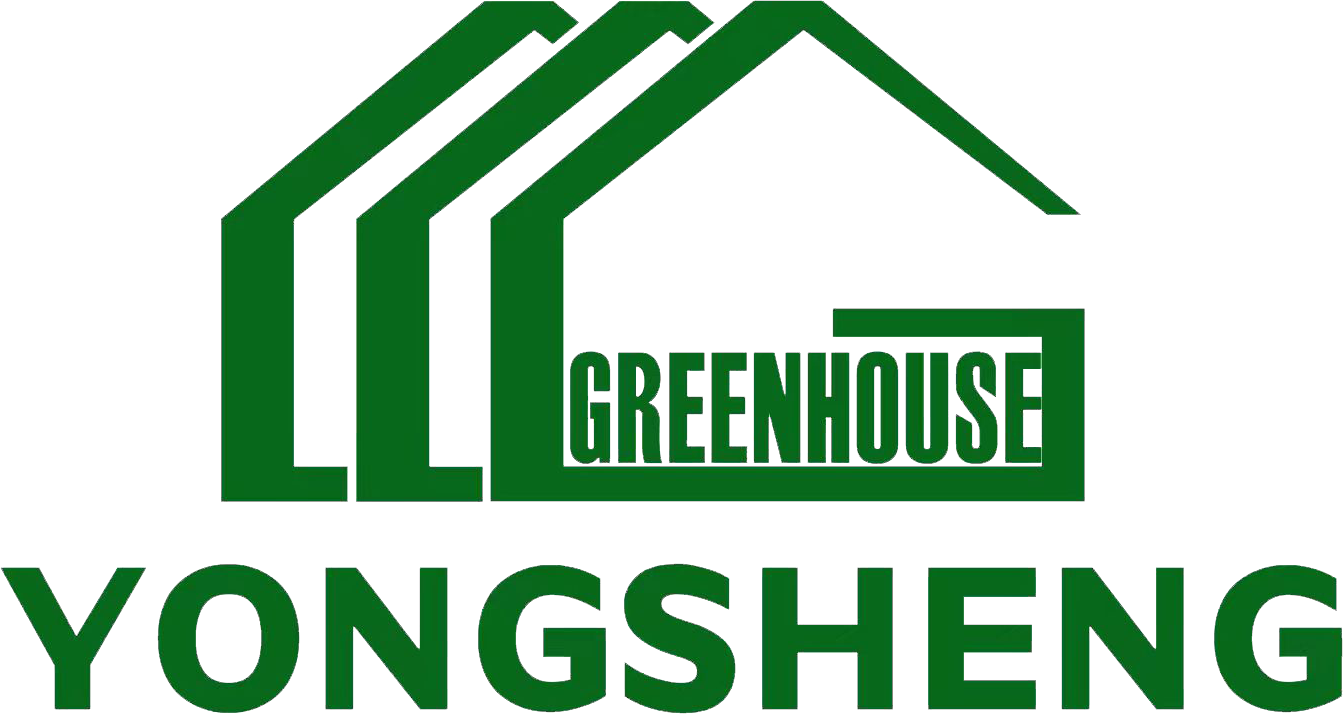Global Market Insights: Why Greenhouses Are Growing in Popularity
In an era marked by climate uncertainty, urban expansion, and a burgeoning global population, greenhouses have emerged as a cornerstone of sustainable agriculture, innovation, and lifestyle transformation. According to recent data from Global Market Insights, the global greenhouse market is projected to exceed $15 billion by 2030, driven by rising demand for year-round crop production, urban farming, and eco-friendly architecture. Among the trends reshaping this industry are three distinct segments: Victorian greenhouses, large-scale commercial greenhouses, and wedding houses—each reflecting unique cultural, economic, and environmental shifts.
The Victorian greenhouse, a symbol of 19th-century British horticultural elegance, is experiencing a renaissance. Characterized by ornate ironwork, curved glass roofs, and a fusion of Gothic and classical design elements, these structures are no longer confined to historical estates. Today, they are coveted by homeowners, botanical gardens, and luxury resorts seeking to blend heritage aesthetics with modern functionality.
Why Victorian Greenhouses Matter:
- Sustainability with Style: Victorian greenhouses leverage passive solar design to regulate temperatures, reducing reliance on artificial heating and cooling. Their arched frames maximize sunlight exposure, making them ideal for cultivating delicate plants like orchids and citrus trees.
- Urban Oasis: In densely populated cities, Victorian greenhouses serve as microcosms of nature, offering a retreat from concrete jungles. London’s Kew Gardens and New York’s Conservatory Garden are prime examples of how these structures preserve biodiversity while educating the public.
- Luxury Living: High-net-worth individuals are investing in bespoke Victorian-inspired greenhouses as extensions of their homes, complete with integrated smart technology, climate control systems, and even indoor water features.
Commercial greenhouses—spanning hectares and often automated—are at the forefront of addressing global food security. These colossal structures, equipped with hydroponic systems, LED lighting, and AI-driven climate management, allow farmers to grow crops efficiently in controlled environments, regardless of external weather conditions.
Key Drivers of Growth:
- Vertical Farming Revolution: Large greenhouses in urban centers like Singapore and Tokyo are using vertical stacking to produce leafy greens and herbs with minimal water and space.
- Year-Round Crop Production: Regions with harsh climates, such as the Middle East, are deploying solar-powered greenhouses to grow tomatoes, cucumbers, and strawberries locally, reducing reliance on imports.
- Sustainable Practices: Advanced systems like nutrient film technique (NFT) and aquaponics minimize waste, while IoT sensors optimize resource usage, aligning with global sustainability goals.
Beyond agriculture, greenhouses are redefining the events industry as wedding houses. These spaces blend natural beauty with customizable design, offering couples a sustainable alternative to traditional banquet halls.
The Allure of Greenhouse Weddings:
- Instagram-Worthy Settings: Lush foliage, blooming flowers, and glass ceilings create a magical backdrop for ceremonies and receptions, appealing to couples seeking unique, photo-friendly venues.
- Eco-Conscious Celebrations: Many wedding houses emphasize sustainability, from locally sourced decor to zero-waste catering, resonating with environmentally minded couples.
- Four-Season Flexibility: Heated or cooled greenhouses allow weddings to take place in any weather, making them popular in regions with unpredictable climates.
- Europe: The birthplace of the Victorian greenhouse, Europe dominates the market, with Germany and the Netherlands leading in commercial greenhouse technology.
- Asia-Pacific: Rapid urbanization and rising food demand are driving adoption in China, India, and South Korea, where large-scale greenhouses are becoming a staple.
- North America: The U.S. and Canada are embracing wedding houses and urban farming greenhouses, particularly in cities like Vancouver and Portland.
While growth is robust, challenges persist, including high initial costs and energy demands. However, innovations are paving the way forward:
- Solar-Powered Greenhouses: Integrating solar panels into greenhouse roofs reduces energy bills and carbon footprints.
- Circular Economy Models: Waste from crops is repurposed as compost or biofuel, closing the loop on resource use.
- AI-Driven Optimization: Machine learning algorithms predict crop yields and adjust irrigation, ensuring efficiency.
As climate change accelerates and urban populations grow, greenhouses are evolving from niche agricultural tools to multifunctional spaces. They now serve as educational hubs, research labs, and even luxury retreats. The Victorian greenhouse, once a relic of the past, now symbolizes resilience and beauty in a changing world. Large-scale commercial greenhouses promise to feed billions sustainably, while wedding houses redefine celebration through nature.
In a world where adaptability is key, greenhouses are not just structures—they are solutions. Their rise in popularity reflects a global shift toward innovation, sustainability, and a deeper connection to the natural world.
Why Choose US?
-
● As the first manufacturer in China to introduce the Victorian conservatory design from Europe, we have 36 years of production experience since 1988, and our products are distributed in 68 countries.
-
● We have a professional team of 8 conservatory design engineers and 60 production workers. We are equipped with 2 hot-dip galvanizing machines, 2 steel shot blasting machines, and 1 spray line.
-
● Our professional design team can provide theoretical calculation data support for wind pressure resistance, earthquake resistance, and snow resistance of large-scale steel structure conservatories.
-
● Strict quality control. 8 inspection stages: raw material inspection, cutting and blanking size inspection, welding quality inspection, hot-dip galvanizing quality inspection, spray quality inspection, assembly quality inspection, and packaging quality inspection. Ensuring smooth assembly of the products, no rust, no leakage, and compliance with customer national standards.
-
● We cooperate with many well-known architectural design companies worldwide.
-
● Customized services. We can customize according to customer designs and dimensions. We also provide supporting facilities such as electric sunshades and air conditioners.
-
● We offer installation dispatch services, inspection services, and free replacement of parts. We also present high-value exquisite gifts.
-
● Video factory tour. You can view the entire production process.






